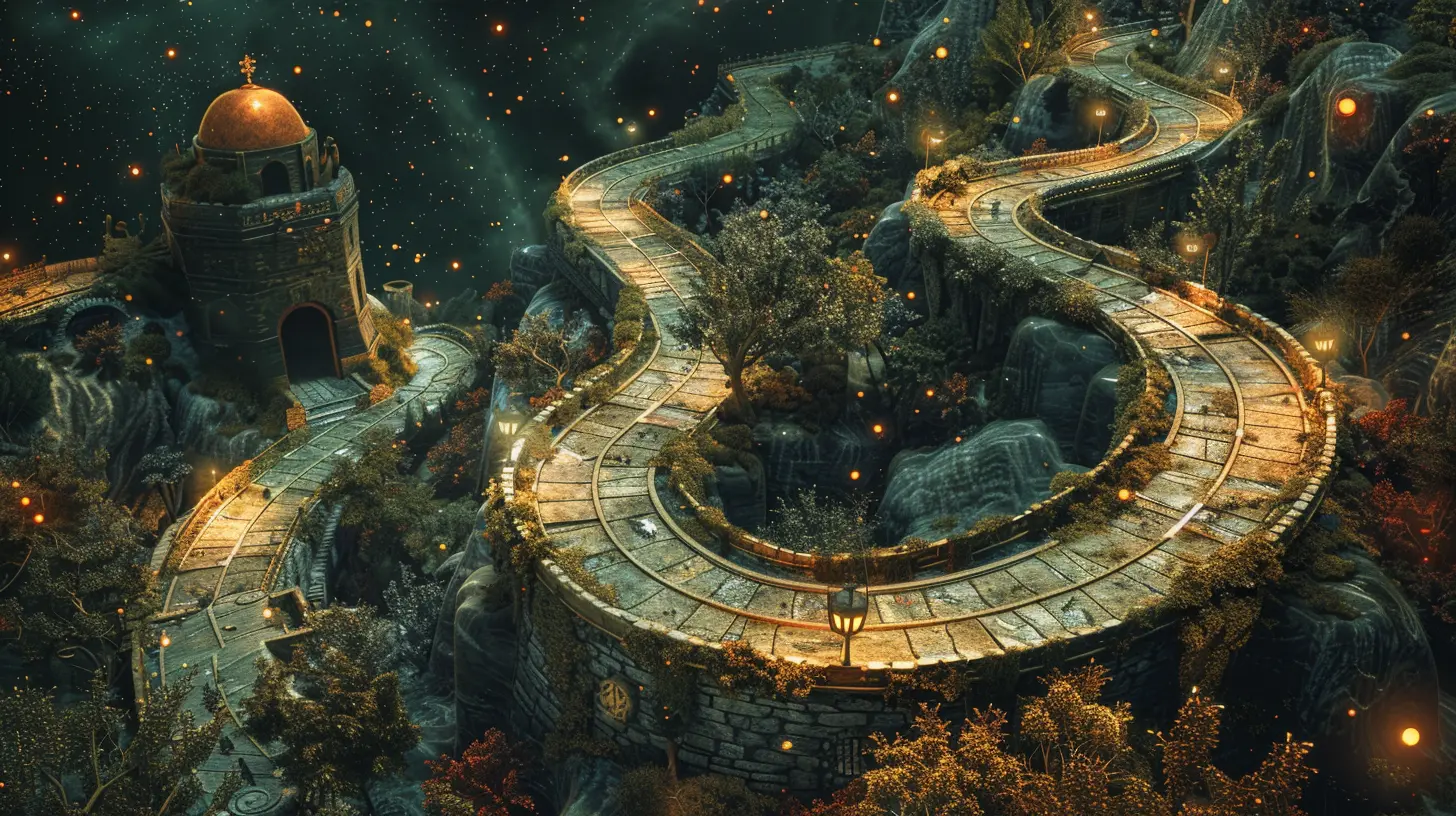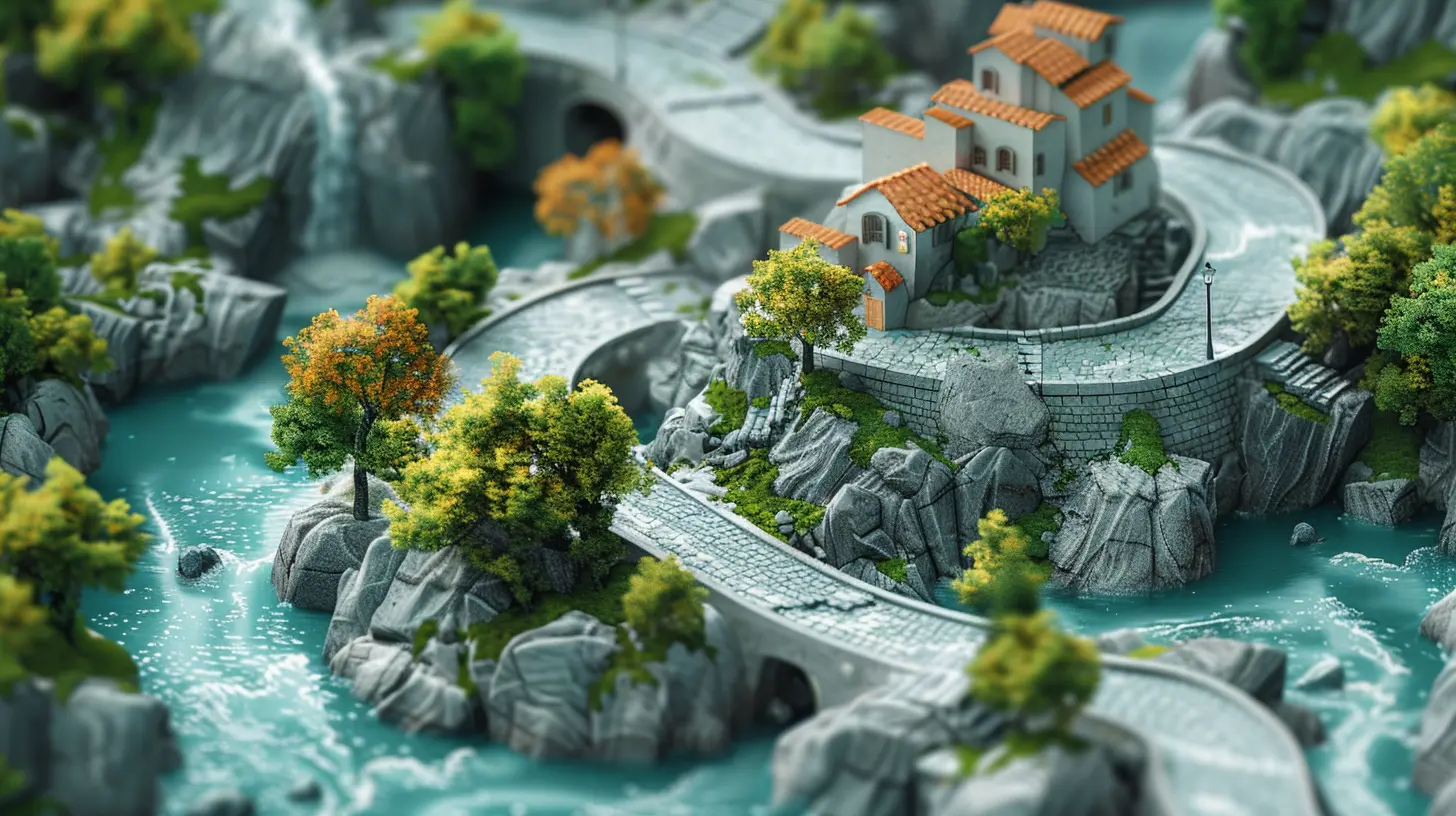Designing Games for Different Skill Levels: Managing Difficulty Curves
26 August 2025
Let’s talk about difficulty curves in games for a second. You know how some games just click, keeping you glued to your screen for hours? And then there are those that either make you want to flip a table or feel like they’re spoon-feeding you? (Yawn!) That sweet spot where a game feels rewarding yet challenging is no accident—it’s all about how the difficulty curve is designed. It’s a delicate balancing act that game developers masterfully (or sometimes not so masterfully) work on.
So, if you’re a developer, gamer, or just someone who’s curious about what makes games tick, let’s break down this whole "difficulty curve" thing. Buckle up, because we’re about to dive into how games are designed to cater to different skill levels. Trust me, it’s cooler than it sounds.
What Is a Difficulty Curve? (And Why Should You Care?)
Before we get too deep, let’s define the concept. Think of a game’s difficulty curve as an invisible roller coaster; it’s the pacing of how challenges and obstacles ramp up (or down) as the game progresses.Get it wrong, and your game could end up like trying to do calculus on your first day of school. But when it’s done right? Oh boy—it’s like the perfect workout for your brain, where you’re sweating but also fist-pumping because you crushed it. That’s the magic of a balanced difficulty curve.
But here’s the kicker: Not everyone rides the same roller coaster the same way. A newbie might freak out at a small drop, while a seasoned thrill-seeker might only perk up when the loops start. Catering to different skill levels? That’s the real challenge.
Why Designing for Different Skill Levels Is Crucial
The Casual Gamers vs. Hardcore Veterans Dilemma
Not all players are created equal. Casual gamers might be playing to relax after work, while hardcore veterans are looking for a challenge to sink their teeth into. It’s like running a buffet—you need to serve mac and cheese and spicy buffalo wings.Now, imagine a game that throws everyone into the same boat. A casual player might rage-quit before they even get past the tutorial, while a hardcore gamer will scoff and uninstall because the bosses are too easy. That’s a recipe for disaster, my friend.
Player Retention Is the Name of the Game
Let’s face it: If your game’s difficulty curve feels off, people will bounce faster than a cheater in an online lobby. A steady progression keeps players invested. They should feel like they’re improving, not like they’re getting smacked across the face by an invisible wall. Managing difficulty curves isn’t just about making things hard or easy; it’s about keeping the player hooked.
Types of Difficulty Curves in Games
Not all difficulty curves are created equal. Let’s break down the different types so we’re all on the same page:1. Linear Difficulty Curve
This one’s straightforward (literally). Imagine the game gets progressively harder in a straight line. Sounds good, right? It’s predictable, but it can get boring if it doesn’t mix things up. Also, if that line gets too steep, beginners will feel left behind.2. Exponential Difficulty Curve
Ever play a game that starts off like a walk in the park and then suddenly feels like climbing Mount Everest? That’s an exponential difficulty curve. It ramps up challenges quickly toward the end. While fun for hardcore players seeking an endgame rush, it can be punishing for casual players.3. Peak and Valley Curve
This one throws in breaks. You’ll face tough challenges (peaks) followed by easier moments (valleys) to catch your breath. It’s like running sprints instead of a marathon. Games like Celeste and Dark Souls do this well by giving players tough battles but rewarding them with moments to recover.4. Dynamic Difficulty Adjustment
Now, this is where things get spicy. The game itself adapts to the player’s skill. Struggling? The game might quietly tone things down. Crushing everything in sight? It might throw tougher enemies your way. Think of it as the game whispering, “Alright, let’s see what you’ve got.” A famous example? Resident Evil 4.
Catering to Different Skill Levels
So how do you actually design a difficulty curve that works for everyone? Spoiler: It’s easier said than done. Here are some strategies developers use to manage different skill levels:1. Multiple Difficulty Modes
This one’s the classic solution: Easy, Normal, Hard, and sometimes Insane (looking at you, Doom Eternal). Let the player decide how much pain they’re looking for. Want a stroll? Pick Easy. Want to cry? Hard mode’s got you covered.But here’s the thing—difficulty modes work best when they’re more than just “enemies have more health.” Good difficulty modes tweak everything: enemy AI, available resources, and even timing challenges. Make each mode feel thoughtful, not like you just slapped a damage multiplier on it.
2. Tutorials That Don’t Suck
Don’t underestimate the power of a well-designed tutorial. A good tutorial eases new players into the game while subtly teaching them the mechanics. Think of it as offering the training wheels before you let them ride solo. Games like Portal absolutely nailed this by making the tutorial feel like part of the game.Pro tip: Don’t shove too much text in people’s faces. No one’s here for a reading assignment. Interactivity beats a wall of text every time.
3. Skill-Based Challenges
Instead of assuming all players are at the same level, why not create optional challenges for the pros while keeping the main game accessible? Think hidden collectibles, secret bosses, or time trials. Super Mario games are a masterclass in this: casual players can focus on beating levels, while completionists go after those pesky hidden stars.4. Dynamic Hints and Help Systems
Some players appreciate a nudge when they’re stuck, while others want to figure it out themselves. Dynamic hint systems are game-changers, quite literally. Games like The Legend of Zelda: Breath of the Wild let players wander freely, but gentle nudges (like NPC dialogue or environmental clues) help steer lost adventurers in the right direction.5. Feedback Loops
A little positive reinforcement goes a long way. When players overcome a tough challenge, shower them with rewards—a new ability, badass loot, or even just a satisfying animation. It tells the player, “Hey, that wasn’t just hard—it was worth it.”Balancing the Curve: The Art and Science
Want to know the secret sauce? Balancing difficulty curves isn’t just about gut feelings; it’s part art, part science. Game developers often rely on:- Playtesting: Watching real players interact with the game is worth a thousand spreadsheets. It helps developers spot choke points or areas where players might lose interest.
- Analytics: Tracking in-game data like how often players die or quit can provide clues about what’s not working.
- Iteration: No difficulty curve is perfect on the first try. Tweaking and fine-tuning the experience based on feedback is essential.
Final Thoughts: Why You Should Care About the Curve
Here’s the thing: A game’s difficulty curve can make or break an experience. It’s what separates a masterpiece from a rage-inducing train wreck. As a gamer, it’s fascinating to see how developers cater to such a wide range of skills. And as a developer, nailing that curve is the ultimate challenge—a puzzle as tricky as any you’d find in your own game.So next time you’re gaming, pay attention to how the difficulty makes you feel. Are you challenged but engaged? Frustrated but motivated? That’s the curve doing its job. And if you’re a developer, remember—you’re building the rollercoaster. Make it a ride worth taking.
all images in this post were generated using AI tools
Category:
Game DesignAuthor:

Aurora Sharpe
Discussion
rate this article
1 comments
Soryn Graham
Great insights on balancing difficulty curves! It's essential for designers to consider varying skill levels, ensuring everyone has a chance to enjoy and succeed in the gaming experience. Keep up the fantastic work!
September 13, 2025 at 4:21 AM

Aurora Sharpe
Thank you! I'm glad you found the insights helpful. Balancing difficulty is indeed crucial for an inclusive gaming experience. Appreciate your support!

